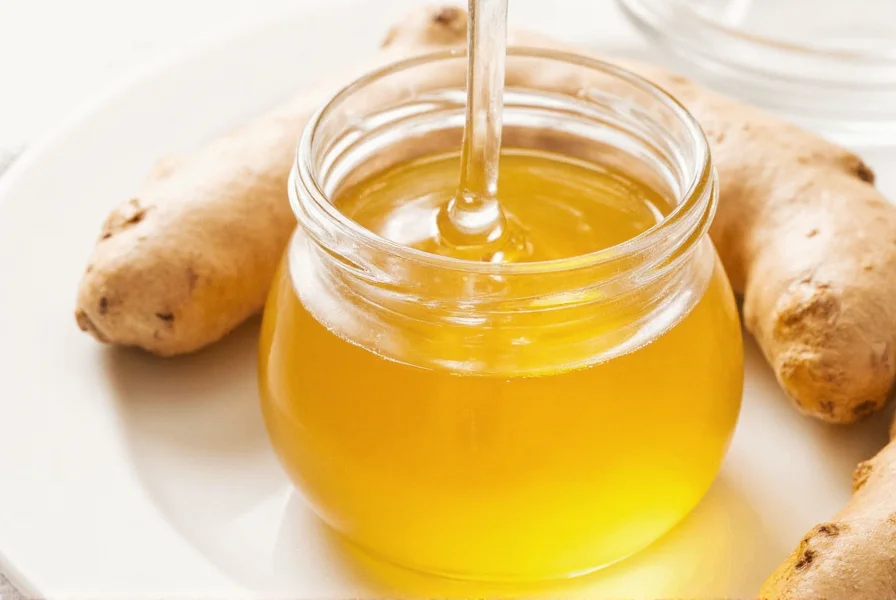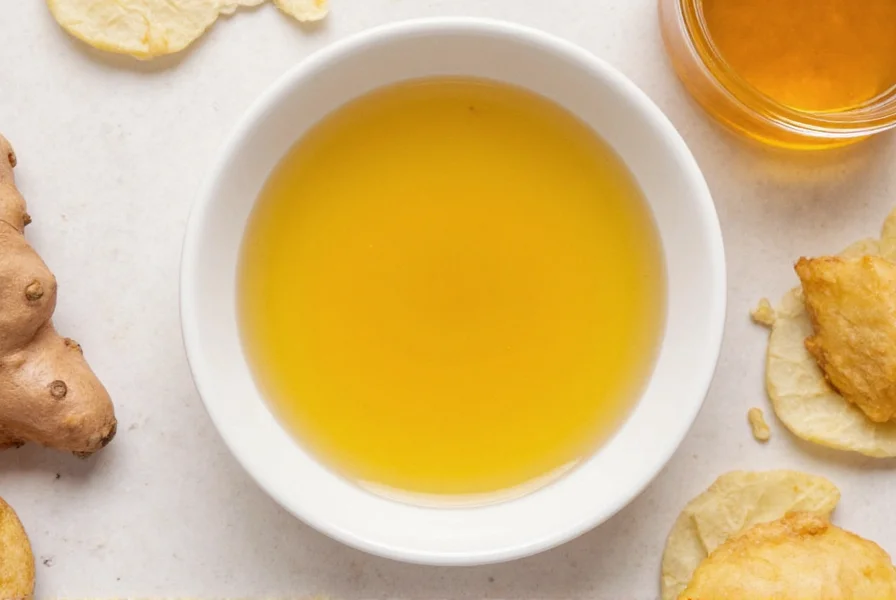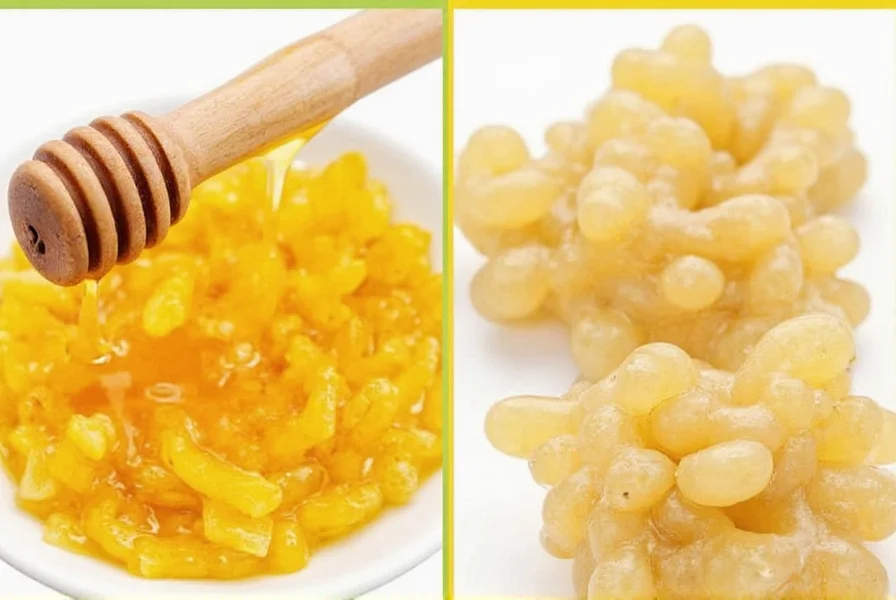When seeking natural solutions for common ailments, many turn to honey and ginger gel as a time-tested remedy. This combination leverages two powerful natural ingredients with documented therapeutic properties. Understanding its proper applications, limitations, and scientific backing helps users make informed decisions about incorporating it into their wellness routines.
What Exactly Is Honey and Ginger Gel?
Honey and ginger gel represents a concentrated formulation where fresh ginger extract is combined with raw, unprocessed honey to create a viscous preparation. Unlike simple honey-ginger teas or syrups, this gel maintains a thicker consistency that provides extended contact time with mucous membranes—particularly beneficial when addressing sore throats or coughs.
The preparation process typically involves:
- Finely grating or juicing fresh ginger root to extract its active compounds
- Blending the ginger with raw honey (never heated above 118°F to preserve enzymes)
- Allowing the mixture to sit for 24-48 hours to create a gel-like consistency
This natural remedy for sore throat works through multiple mechanisms: honey's viscosity coats irritated tissues while its hydrogen peroxide content provides antimicrobial action, and ginger's gingerols reduce inflammation and suppress cough reflexes.

Scientific Evidence Behind the Ingredients
While research specifically on honey and ginger gel formulations remains limited, substantial evidence supports the individual components:
| Ingredient | Key Compounds | Documented Benefits | Research Level |
|---|---|---|---|
| Honey (especially raw) | Hydrogen peroxide, methylglyoxal, flavonoids | Antimicrobial, anti-inflammatory, cough suppression | Strong clinical evidence |
| Ginger | Gingerols, shogaols | Nausea reduction, anti-inflammatory, antioxidant | Moderate to strong evidence |
A 2023 systematic review published in Complementary Therapies in Medicine confirmed that honey outperforms placebo for nighttime cough frequency and severity in children over 1 year. Similarly, multiple studies demonstrate ginger's effectiveness for pregnancy-related nausea and osteoarthritis pain.
Practical Applications and Effectiveness
Understanding when honey ginger gel benefits most requires examining specific use cases:
Respiratory Support
For upper respiratory infections, this natural remedy for cough works by:
- Coating throat tissues to reduce irritation
- Decreasing cough frequency (studies show 2-3 teaspoons of honey before bed reduces nighttime coughing)
- Providing mild antimicrobial action against common pathogens
Research indicates honey and ginger for cough relief shows particular effectiveness for viral infections, though it offers no benefit for bacterial infections requiring antibiotics.
Digestive Benefits
Ginger's active compounds stimulate gastric motility and reduce nausea. The gel formulation allows for slower release of ginger compounds compared to tea, potentially extending digestive benefits. Many users report relief from:
- Morning sickness (though consult your doctor during pregnancy)
- Post-operative nausea
- Indigestion and bloating

Safety Considerations and Limitations
Despite its natural origins, important safety factors must be considered:
Who Should Avoid Honey and Ginger Gel
- Infants under 12 months: Honey carries risk of infant botulism
- People with ginger allergies: Though rare, can cause severe reactions
- Those on blood thinners: Ginger may increase bleeding risk
- Diabetics: Monitor blood sugar as honey contains natural sugars
When to Seek Medical Care
Natural remedies like honey ginger gel for sore throat shouldn't replace professional medical care when experiencing:
- Fever over 102°F (38.9°C)
- Symptoms lasting more than 10 days
- Difficulty swallowing or breathing
- White patches on throat (possible strep infection)
Creating Your Own Honey Ginger Gel at Home
Preparing an effective honey and ginger gel for cough at home ensures freshness and avoids unnecessary additives:
- Peel and finely grate 2 ounces of fresh ginger root
- Mix with 8 ounces of raw, unprocessed honey
- Cover and let sit at room temperature for 24-48 hours
- Strain if desired for smoother texture
- Store in airtight container in cool, dark place (lasts 2-3 months)
For enhanced benefits, some add lemon juice (vitamin C) or cinnamon (additional antimicrobial properties), though these aren't essential for basic preparation.
How It Compares to Other Remedies
Understanding where honey ginger gel fits among treatment options helps set realistic expectations:
- vs. over-the-counter cough medicines: Honey shows comparable or superior cough suppression without potential side effects like drowsiness
- vs. plain honey: Ginger addition provides anti-inflammatory benefits beyond honey's coating effect
- vs. ginger tea: The gel formulation provides longer-lasting throat coating than liquid tea
- vs. prescription medications: Not a substitute for antibiotics or serious conditions requiring medical intervention
Maximizing Effectiveness
To get the most from your honey and ginger gel for respiratory support:
- Take 1-2 teaspoons directly when symptoms appear
- Use before bedtime for nighttime cough relief
- Avoid eating or drinking for 15-20 minutes after application
- Combine with adequate hydration and rest
- Store away from heat and direct sunlight to preserve active compounds
Remember that natural remedies work best as part of a comprehensive approach to wellness, not as standalone solutions for serious health conditions.
Frequently Asked Questions
Can honey and ginger gel help with strep throat?
While honey and ginger gel may provide symptomatic relief for throat pain associated with strep throat, it does not treat the bacterial infection itself. Strep throat requires antibiotic treatment prescribed by a healthcare provider. Using this natural remedy alongside medical treatment may help manage discomfort, but never as a replacement for antibiotics when needed.
How often can I take honey and ginger gel for cough?
For adults, 1-2 teaspoons every 3-4 hours as needed provides effective relief without excessive sugar intake. Children over 1 year may take ½-1 teaspoon up to 3 times daily. Never exceed 4-5 doses in 24 hours, and discontinue use if symptoms worsen or persist beyond 7-10 days. Always consult a pediatrician before giving to children under 2 years.
Does honey and ginger gel work for acid reflux?
Ginger's anti-inflammatory properties may help reduce occasional heartburn for some individuals, but honey and ginger gel isn't specifically designed for acid reflux treatment. In fact, honey's natural sugars might trigger symptoms in sensitive individuals. For persistent reflux, consult a healthcare provider as this could indicate GERD requiring medical management rather than natural remedies.
Can I use honey and ginger gel while pregnant?
Honey is safe during pregnancy (unlike for infants), and ginger is commonly recommended for pregnancy-related nausea. However, consult your obstetrician before regular use, as high ginger intake may affect hormone levels. Most healthcare providers consider moderate consumption (1 teaspoon 2-3 times daily) safe during pregnancy, but individual circumstances vary.











 浙公网安备
33010002000092号
浙公网安备
33010002000092号 浙B2-20120091-4
浙B2-20120091-4